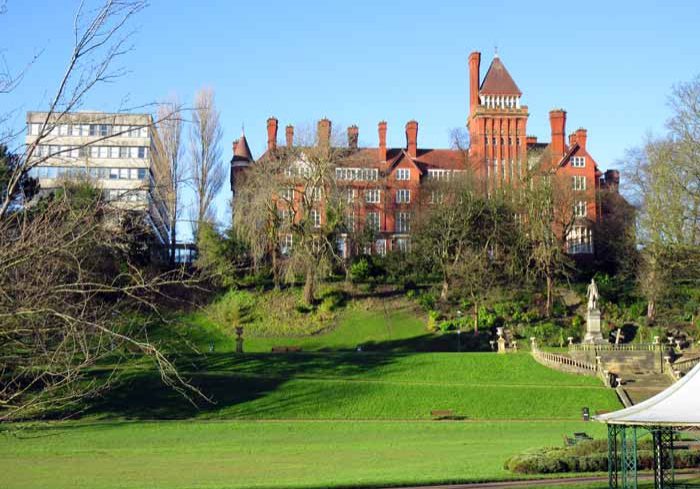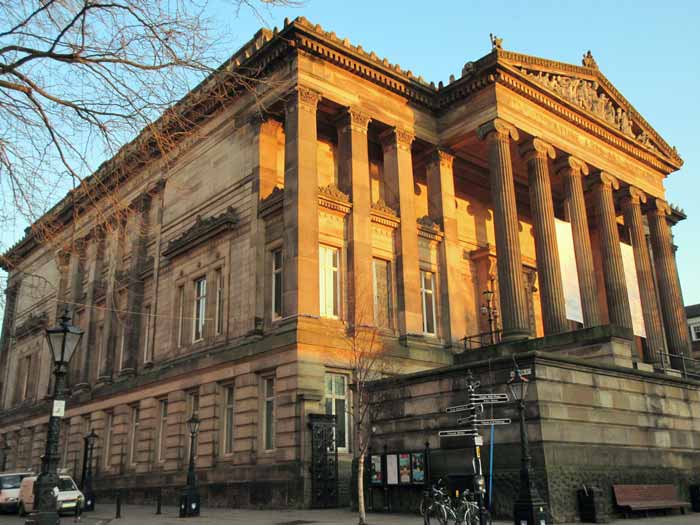
Explore the vibrant history of Preston city… in 50 buildings
by Northern Life
In recent weeks, it has been announced that three of Preston’s historical buildings are about to be renovated and transformed. The former Park Hotel overlooking Miller Park, the old General Post Office building overlooking the Market Place and the old Corn Exchange on Lune Street are being primed for upgrades. It seems that buildings have a life of their own and those in Preston city are no exception.
The current attention focused on the buildings in our city comes at a time when a new book entitled ‘Preston In 50 Buildings’ is launched by Amberley Publishing. It is written by local historian and author Keith Johnson and the buildings currently in the public eye, along with many more of the city’s structures, are included in the works. The history of our buildings is an enthralling one and the book chronicles the events and the people who helped shape the city architecture of today.
Preston became a city in 2002 over two hundred years after the first cotton mill had been erected in the town. What followed that first cotton mill was two centuries of development that left us with a University city.
Daniel Defoe, the author of Robinson Crusoe, toured the nation in the early 18th Century as a prelude to his three volume travel book, ‘Tour through the Whole Island of Great Britain (1724-27)’ which provided a fascinating first-hand account of the state of the country. Regarding Preston he had this to say – ‘Preston is a fine town, but not like Liverpool or Manchester. Here’s no manufacture; the town is full of attorneys, proctors, and notaries. The people are gay here and though non the richer for it; it has by that obtained the name of Proud Preston’.
He had been particularly impressed by Church Street – then called Churchgate and by Fishergate remarking thus – ‘The great stretch is filled with great houses and is very broad. The house of the present Earl of Derby makes a noble appearance, and in general the houses are very well built. To this town the gentry resort in the winter from many miles around, and there are, during the season, assemblies and balls in the same manner as York.’
- Market Place No 33-34 Thos Yates – reminder of old Market Place
- Harris Museum an Iconic Structure
Fine words indeed, but things would certainly change in the centuries ahead as the Preston city of today was created. It involved great feats of civil engineering, far sighted architects and people intent on progress.
The buildings of any town or city define the place more than anything else and Preston city is no exception. The sky line is inevitably dominated by the tallest of structures and the main highways through Preston city were shaped by the erection of the earliest dwellings and footpaths. It never is a blank canvas for the developer, but one where the existing landscape cannot be ignored.
The choice of 50 existing buildings is no easy task for we all have those to which we attach fondness or favour. Those selected have been chosen for reasons of social, commercial, historical, political or civil importance, or simply because they are civil engineering feats to admire. Mention is also given in the book to numerous other buildings that in their own way are part of the rich tapestry woven into the soul of our city.
They all, in their own way, reflect the drive and ambition of people to improve the environment of their day; for Preston folk to linger, dwell or work within. Hopefully, you will appreciate what was no mean achievement to create a city; although with hindsight it probably didn’t turn out quite like the town the planners of old foresaw or dreamed about. Only a few factory chimneys from the industrial heydays now remain, but those that do hold a significant place in the history of the city.
The great name of Horrockses has left a legacy from the time Sam Horrocks built his mansion at Lark Hill through to the construction of Centenary Mill on New Hall Lane, now converted into luxury apartments. The other great monument from the cotton trade, the Tulketh Spinning Mill, has also passed the test of time and still provides employment for many.
- Spittall Moss Mill – Fylde Rd great survivor
- Tower blocks at Avenham
And there is the legacy left behind by the dockers of Preston an area now transformed and known as Riversway; and by the tram and omnibus pioneers of Preston Corporation and the fondly remembered Ribble Bus Co; not forgetting the railway pioneers with their bridges across the River Ribble or the later emerging Victorian railway station through which passenger and freight trains still pass each and every day.
Although the book is essentially about buildings it does afford the opportunity of walking in the footsteps of Preston folk down the generations, from noble men to common folk, and you will catch a glimpse of their lives on the streets of old as the place developed around them.
Thankfully many of the homes of grandeur inhabited by genteel folk still remain to allow us to marvel at their architecture. Notable residents of our town past are mentioned, such as Edwin Henry Booth who once dwelt at Avenham Tower; Joseph Livesey whose residence was around the corner on Bank Parade where well cultivated gardens once lourished, and LEP newspaper pioneer George Toulmin who lived nearby on Ribblesdale Place. Down Stoneygate you can still visit the very place where Sir Richard Arkwright developed his revolutionary spinning frame, whilst Winckley Square owed its development to the ambition of William Cross and the Pedder family’s involvement with Ashton House eventually led to another pasture land becoming a public park.
The idea of choosing 50 buildings in a town or city is quite thought provoking. Yes, there are many former buildings still recalled with fondness, but it is the great survivors, those of great longevity or local significance that take their place in chronological order within the pages of the book. It is apparent that great architects have been at work here, great planners and far-sighted pioneers have strived to build what in many cases are true monuments to their work.
The architects of the 19th century, who inherited a landscape of factory chimneys and windmills, would no doubt look in awe upon the structures that have emerged since the middle of the 20th century. If only they were able to stand on the top floor of the Tithebarn Street bus station they would see not only the church towers and steeples built in their days, but towering skyscraper blocks of apartments, hotels and offices along with temples and domed mosques, a sign of today’s multicultural Preston city.
‘Preston in 50 Buildings’ explores the history of this rich and vibrant community through a selection of its greatest architectural treasures. From the Grade I – listed Harris Museum to the modern Guild Hall, this unique study celebrates the city’s architectural heritage in a new and accessible way. The book takes you on a tour of the city’s historic buildings and modern architectural marvels and reveals a little about their construction and creation. The churches, theatres, public houses and cinemas of Preston’s industrial past are examined alongside the innovative buildings of a 21st century city.

You can buy Preston in 50 building here.








